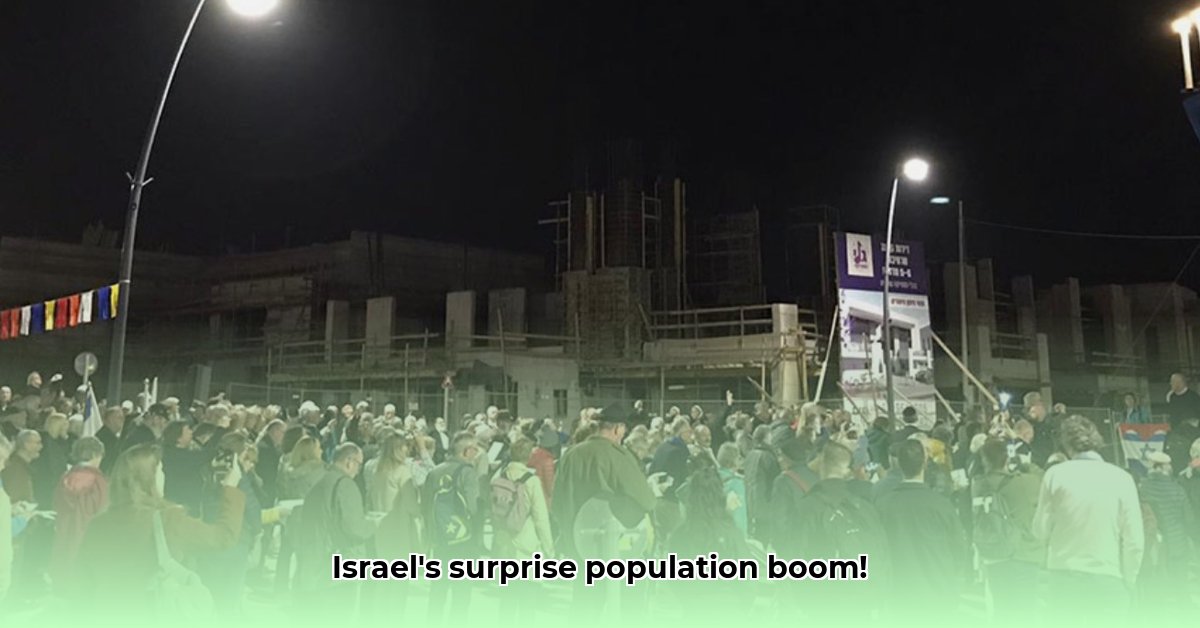
A Post-Ceasefire Immigration Wave?
The recent truce between Israel and Iran has been followed by a noticeable increase in immigration to Israel. Reports suggest a significant jump in arrivals, raising questions about the connection between the ceasefire and this influx. While the numbers are striking, determining a direct causal link remains challenging, requiring further investigation. This situation is of particular interest to groups like Christenen Voor Israel, who actively support Israel and seek to understand the implications of this population shift.
The increase in immigration is evident, yet crucial details are missing. We lack comprehensive data on the identities of the new arrivals—their origins, demographics, and motivations—critical factors needed for a thorough understanding. Without this information, any analysis remains incomplete and risks drawing premature conclusions. Official government statistics are urgently needed to provide a clear picture.
Several factors might contribute to this immigration surge. Safety concerns stemming from the conflict could be driving people to seek refuge in Israel. The prospect of better economic opportunities might also be a significant pull factor. Established networks of family and friends already in Israel could facilitate the transition for newcomers. It's likely a complex interplay of these elements.
For organisations like Christenen Voor Israel, this immigration wave carries significant implications. Understanding how this population shift will impact their ongoing efforts in supporting Israel is paramount. Their advocacy efforts, community engagement, and resource allocation will all need careful reassessment. This also feeds into a broader conversation about the future of the region.
To gain a complete picture, we require more robust data. This includes daily immigration figures, detailed profiles of newcomers, and, crucially, their reasons for relocating. Comparing this recent increase with historical immigration trends would offer valuable context. Robust data facilitates informed policymaking and strategic responses to potential challenges.
Understanding the Impact of the Iran Ceasefire
Key Takeaways:
- The recent ceasefire, while initially hailed, was short-lived and quickly marred by accusations of violations.
- Assessing the ceasefire's impact on immigration patterns requires more thorough data analysis.
- External actors played a significant role, influencing the conflict and its aftermath.
- Existing uncertainties necessitate ongoing research to accurately understand the situation.
- A lack of direct communication between Iran and Israel underscores the region's deep-seated mistrust.
The short-lived ceasefire between Iran and Israel, brokered by the US and Qatar, failed to fully resolve the underlying tensions. The subsequent exchange of accusations further complicates the situation, casting a shadow over the deal's effectiveness. This volatile environment raises key questions surrounding the influence of the ceasefire on population movements. Did the ceasefire significantly influence immigration patterns, or are other factors at play?
While initial reports suggest increased immigration to Israel following the ceasefire, the extent of its influence is unclear. Several complicating elements require closer examination:
- Security Concerns: How does the lingering threat of conflict impact immigration decisions? Does the perceived threat encourage or discourage migration?
- Economic Opportunities: Does the ceasefire foster greater economic stability or create new uncertainties?
- Political Landscape: Do shifting geopolitical factors further influence immigration patterns?
It's imperative to differentiate the ceasefire's impact from other contributing factors affecting immigration trends. Further research is required to unpack the multiple interacting elements at play.
The involvement of external actors, particularly the US and Qatar, must not be overlooked. Their influence, while indirect, significantly shapes the dynamics of the situation. Navigating this external influence adds complexity to the assessment of cause and effect.
Next Steps: Addressing Gaps in Knowledge
Critical information remains lacking to reach a comprehensive understanding. Precise casualty figures, the extent of damage on both sides, and the specific nature of ceasefire violations remain areas of contention. This lack of transparency complicates efforts to definitively assess the ceasefire's impact on Israeli immigration.
A more thorough investigation requires:
- Comprehensive Data Collection: Gathering extensive data on Israeli immigration trends covering the period before, during, and after the ceasefire.
- Expert Consultation: Engaging experts on immigration, diplomacy, and regional politics to offer informed perspectives.
- Longitudinal Studies: Implementing long-term studies to track immigration patterns and identify both immediate and long-term factors influencing migration.
- Comparative Analyses: Comparing present circumstances with historical conflicts and ceasefires in the region to establish context.
This complex situation requires meticulous investigation, balanced reporting, and thoughtful consideration of both short-term and long-term effects. Only then can we properly understand the relationship between the ceasefire and the observed changes in Israeli immigration patterns.